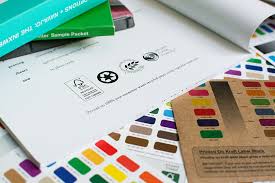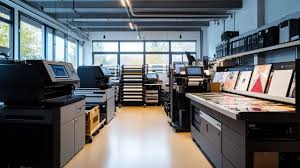
Affiliate Disclosure
Note: This banner contains an affiliate link. If you click and make a purchase, we may earn a commission at no extra cost to you. This helps us maintain and improve our content for users like you, supporting our travel site operations.
In a world increasingly focused on sustainability, eco-friendly printing has become a crucial aspect of reducing waste in both personal and professional environments. Printing often involves excessive use of ink and paper, contributing significantly to environmental issues such as deforestation and landfill overflow. Fortunately, there are practical steps you can take to reduce your environmental footprint without sacrificing print quality or functionality. This guide will explore how you can save ink, paper, and money with simple eco-friendly printing tips.
1. The Environmental Impact of Printing

Understanding the environmental impact of printing is key to adopting more sustainable practices. Paper production requires vast amounts of water, energy, and natural resources, particularly trees, which are a finite resource. Moreover, manufacturing ink can release harmful chemicals into the environment, and non-recyclable ink cartridges contribute to plastic waste. The environmental burden of printing is further magnified by the fact that a significant amount of paper used in offices ends up in landfills after only a single use.
Even small changes, such as reducing ink and paper waste, can have a large cumulative impact on resource conservation. By focusing on eco-friendly printing practices, we can help preserve forests, minimize energy consumption, and reduce harmful chemical emissions.
2. Why You Should Adopt Eco-Friendly Printing Practices

Eco-friendly printing isn’t just about reducing your environmental footprint. There are numerous benefits to adopting these practices, both for individuals and businesses:
- Conserving Resources: Paper production consumes a large number of trees and requires energy and water. By printing less and choosing recycled paper, you help reduce the demand for raw materials.
- Reducing Carbon Footprint: The manufacturing of both paper and ink contributes significantly to greenhouse gas emissions. Eco-friendly printing helps reduce carbon emissions from energy-intensive production processes.
- Cost Savings: Conserving ink and paper directly reduces the costs of printer consumables. Businesses, in particular, can save significant amounts on ink cartridges and paper by implementing efficient printing practices.
- Waste Reduction: Reducing the amount of paper and ink used in printing helps minimize waste. Fewer printed documents mean less paper in landfills and a smaller environmental impact from disposal.
3. Tips for Eco-Friendly Printing: How to Save Ink and Paper

1. Adjust Your Printer Settings
One of the simplest ways to reduce ink and paper consumption is by tweaking your printer settings:
- Print in Draft Mode: Draft mode uses much less ink than normal printing, making it an excellent choice for internal documents, notes, or anything that doesn’t require high-quality prints.
- Use Economy Mode: Many printers feature an economy or low-quality setting designed to conserve ink. This mode reduces ink consumption, which is great for documents that don’t need to look perfect.
- Print Double-Sided: Double-sided printing, or duplex printing, allows you to print on both sides of the page, effectively halving your paper usage. It’s a highly efficient way to cut down on paper waste.
2. Use Print Preview and Proofread Before Printing
Before you print, always preview your document to ensure that unnecessary pages and blank spaces are removed. Proofreading for mistakes can also help you avoid the need to reprint.
- Eliminate Blank Pages: Always check for blank or empty pages in your document. This simple check can prevent unnecessary paper wastage.
- Proofread for Errors: By proofreading your document thoroughly before printing, you avoid the costly mistake of reprinting multiple copies because of minor errors.
3. Optimize Your Content for Printing

The way a document is formatted can have a significant impact on ink and paper consumption. Consider the following tips when designing or formatting documents:
- Use Black and White: Color printing consumes more ink than black-and-white printing. Unless absolutely necessary, stick to monochrome prints to save ink.
- Choose Ink-Efficient Fonts: Some fonts are more ink-efficient than others. Fonts such as “Calibri,” “Arial,” and “Times New Roman” use less ink than decorative fonts like “Arial Black” or “Impact.”
- Optimize Text Size and Spacing: Large fonts and wide spacing between lines can waste both ink and paper. Stick to a smaller font size (e.g., 10 or 12 pt) and use appropriate line spacing to fit more content on a single page.
4. Print Only What You Need
Before you hit print, ask yourself whether the document really needs to be printed. Often, digital options are just as effective as physical prints.
- Digital Sharing: Instead of printing documents, share them via email or cloud-based platforms like Google Drive or Dropbox. Digital sharing helps avoid the need for physical prints while ensuring that the document can be accessed by others.
- Use E-Signatures: Rather than printing contracts or forms for signatures, use digital signature tools that let you sign documents electronically. This eliminates the need for printing entirely.
5. Use Recycled Paper
Whenever you must print, opt for recycled paper. Using paper made from recycled materials helps reduce the need for virgin pulp and saves trees.
- Look for Paper with High Recycled Content: Ideally, choose paper with 100% recycled content. It’s available in most office supply stores and works just as well as standard paper.
- Choose Recycled Ink Cartridges: Recycled or remanufactured ink cartridges can help reduce plastic waste. These cartridges are often more affordable and work just as effectively as new cartridges.
6. Reusing Paper
One of the best ways to save paper is to reuse it. If a printed document doesn’t need to be perfect or you’ve made a mistake, consider repurposing the paper.
- Scratch Paper: Use one-sided printed documents as scratch paper for notes, brainstorming, or rough drafts. This extends the life of the paper before recycling.
- Repurpose Old Documents: Old printed materials can be used for packing, shredding for composting, or even as scrap paper for personal use.
7. Recycle Used Paper and Ink Cartridges
Proper disposal is crucial to minimizing the environmental impact of printing. Make sure to recycle both paper and ink cartridges.
- Recycling Paper: After you no longer need printed documents, recycle them. Paper is one of the most widely recycled materials globally, and ensuring it’s processed correctly reduces the demand for new paper.
- Ink Cartridge Recycling: Many retailers and manufacturers offer ink cartridge recycling programs. Some even offer discounts or incentives for returning used cartridges.
8. Use Cloud Storage to Reduce Printing

Cloud storage offers a great way to store documents digitally instead of printing them out. Platforms like Google Drive, Dropbox, and OneDrive allow you to access your documents from any device, cutting down the need for physical prints.
- Access Documents Anytime: With cloud storage, there’s no need to print a document for storage purposes. It’s accessible from anywhere, reducing the reliance on physical copies.
- Collaborate Digitally: Cloud-based document editing tools like Google Docs enable real-time collaboration without the need for printed copies.
9. Regular Printer Maintenance
Maintaining your printer is another way to improve efficiency and reduce waste. A well-maintained printer will produce better results with less ink and paper.
- Clean the Print Heads: For inkjet printers, regular cleaning of the print heads ensures smooth ink flow, which reduces waste.
- Prevent Paper Jams: Paper jams not only waste paper but can also result in poor-quality prints. Regularly check for debris or obstructions to prevent unnecessary reprints.
Conclusion
Eco-friendly printing is an essential practice for both businesses and individuals looking to reduce their environmental footprint. By adopting simple practices like adjusting printer settings, using recycled paper, and reducing unnecessary prints, you can significantly cut down on paper and ink waste. Not only does this contribute to a greener environment, but it also helps save money and improve efficiency.
Remember, small changes in your printing habits can lead to significant positive impacts on the environment. Start today by implementing these eco-friendly practices, and inspire others to do the same.

